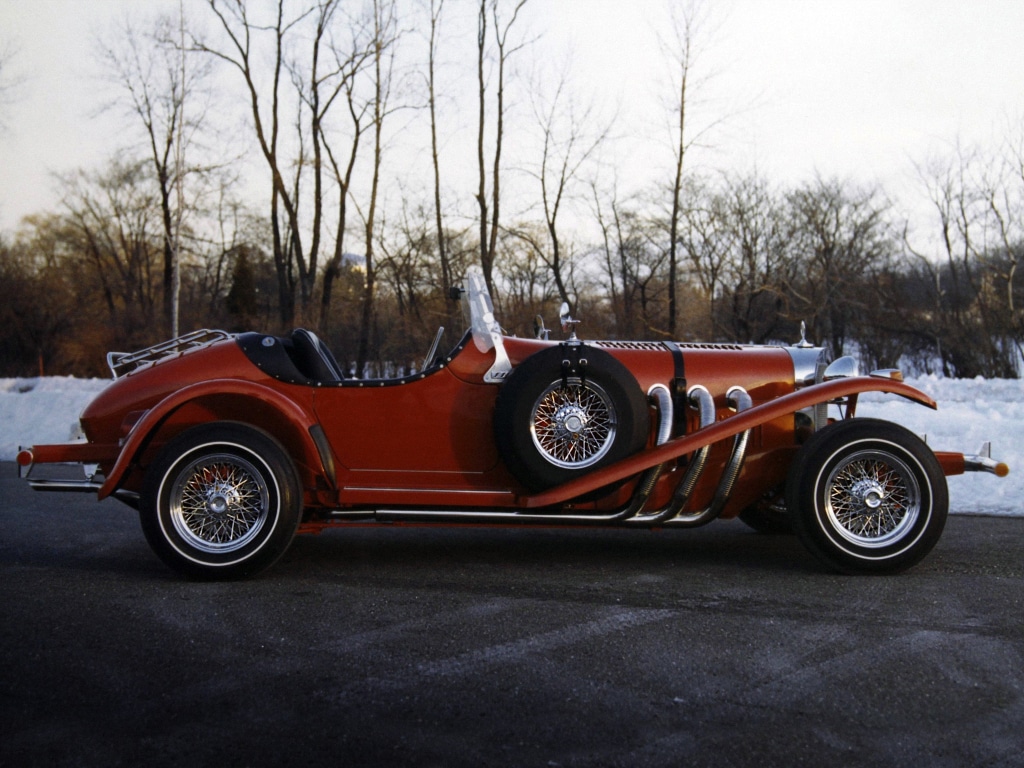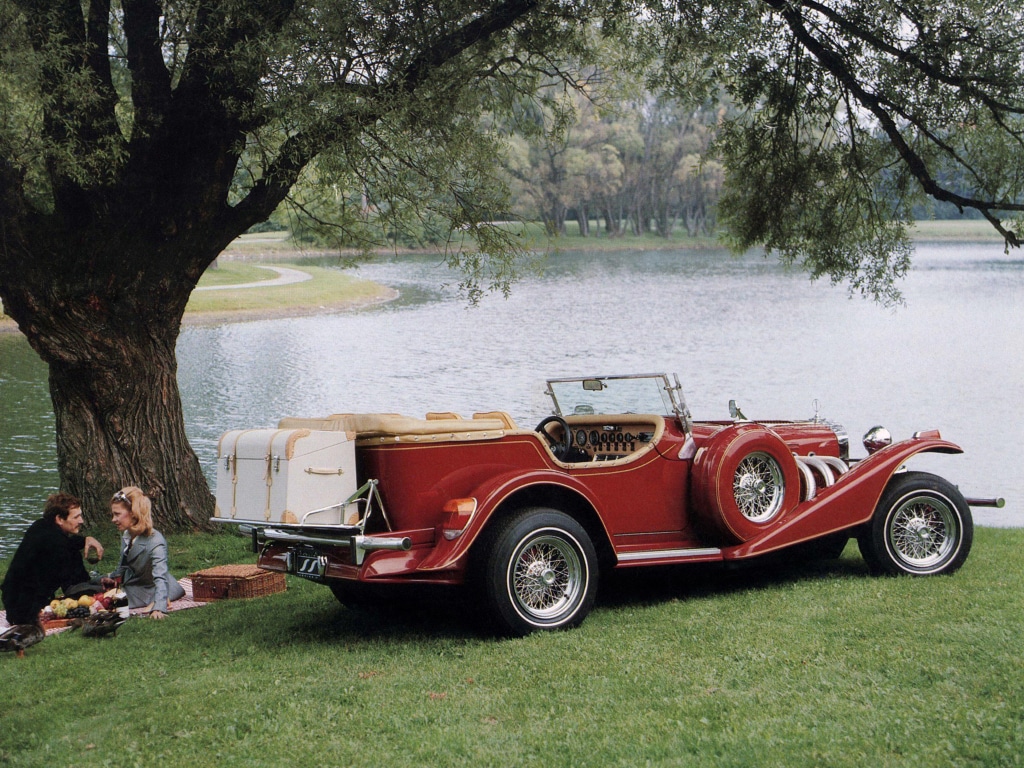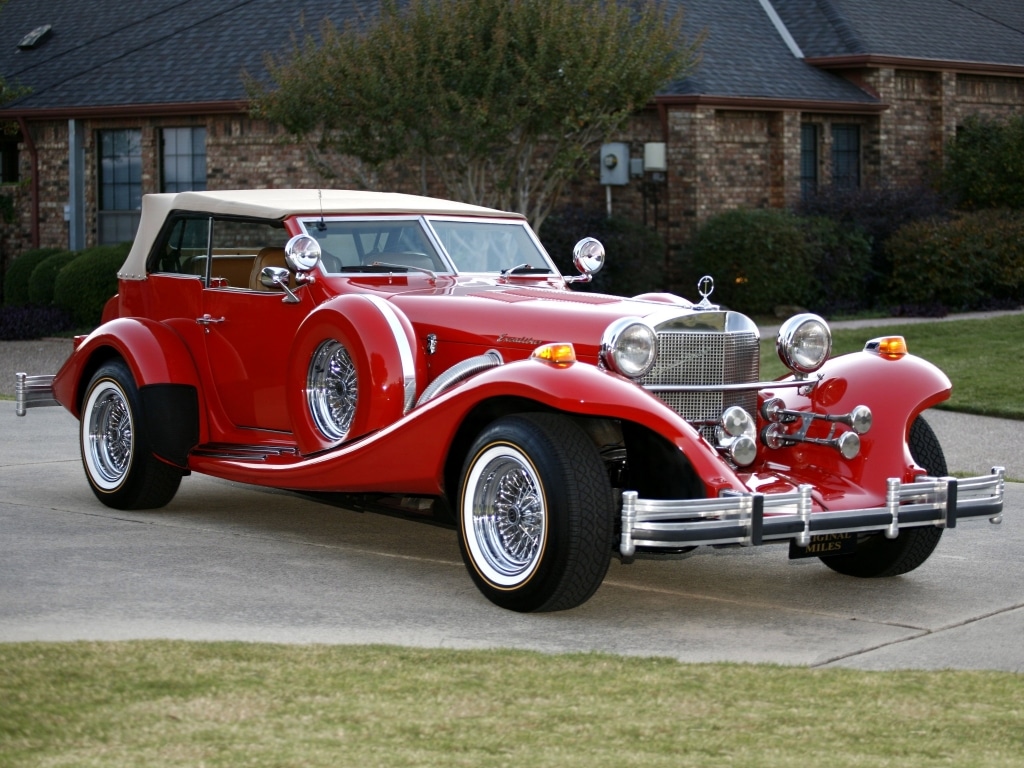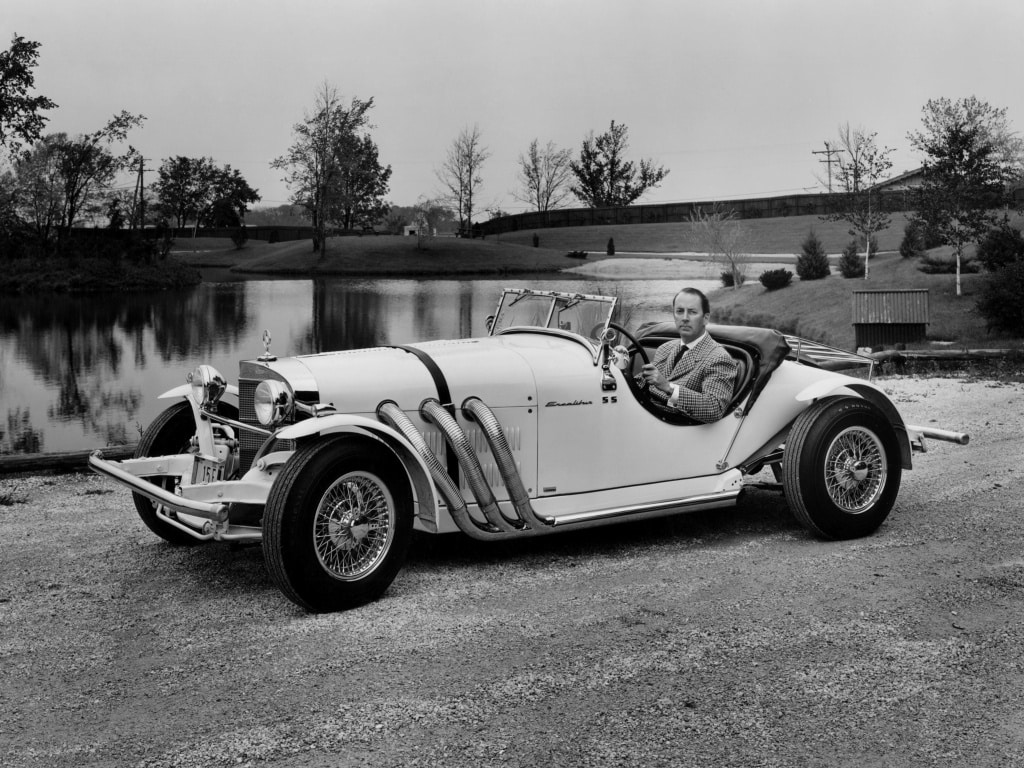If you think that remastering classic shapes and re-introducing them to modern car buyers is a contemporary idea introduced in the early 2000s with the new Mini or new Beetle, you are very much mistaken. Retro-futurism has been around for ages; it just wasn’t part of mainstream automotive fashion. The first attempt in this direction happened in the early ’60s in the form of the legendary Excalibur. This car company practically invented the neo-classic styling approach and created cars that looked antique but were very modern and fast. Here is the story about the Excalibur Phaeton, a unique machine that spawned many imitators.
The story of Excalibur cannot be told without mentioning its creator – famous American automotive and industrial designer Brooks Stevens. Known for numerous successful automotive designs, Stevens was a household name in the car industry in the 50s, working for Studebaker, Jeep, and later Chrysler. He also designed trains and motorcycles and worked as a consultant for numerous companies. As a talented stylist, Stevens always had a soft spot for classic automobiles and even established his own car museum decades before the classic car mania took over the automotive community. He particularly adored the shapes from his childhood and praised the European luxury and racing cars of the ’20s and ’30s. In the late ’50s, he came to the idea of building his own car company but using those classic influences as a basis for his designs. Before him, nobody even thought of doing something similar since pre-war cars were considered outdated and obsolete in every way, and buyers were interested only in modern shapes, chrome fins, and big engines.
At the time, Stevens worked for Studebaker, one of the most prominent names in the early days of the American car industry. When asked to produce some concept car that would draw attention to the ailing Studebaker, he persuaded the general manager to allow him to use the Studebaker Lark chassis and 290 hp V8 engine for his own creation and display it at Studebaker’s booth in 1963 Detroit Auto Show. The result was Excalibur SS, the first neo-classic roadster, something utterly different from what the rest of the industry was doing. Immediately, his project received a lot of interest from classic fans praising the innovative approach, attention to detail, and timeless shape. The body was made from plastic, but the chrome grille, windshield, bumpers, and wire wheels were like they came from the early 1920s. Fascinated by classic shapes, Stevens used Mercedes SSK as a direct inspiration and basically copied its lines over the Lark frame. Choosing the Mercedes SSK wasn’t an accident; in the late ’50s, Studebaker-Packard Corporation was the sole US importer of Mercedes Benz cars, so Stevens was well aware of Mercedes’s heritage and its legendary models.

However, as Excalibur was getting traction amongst car enthusiasts, Studebaker as a company was getting ready to close its doors. The engine production was stopped, and Brooks Stevens was forced to look for new business opportunities. So, in 1965, he established an Excalibur company to build his famed neo-classical roadster. The Studebaker Lark platform was retained and available, but instead of Studebaker V8, the SS got a new Chevrolet 327 (5.3-liter) V8 from Corvette with 300 hp. The car successfully toured the show circuit, and along with enthusiastic reactions came a significant number of orders.

Compared to sports cars of the period, Excalibur SS Series 1 was a serious performer. Although it had a bulky chassis and engine, the body was light fiberglass, and the whole car weighed just over one ton. With 300 hp from Chevy V8, rear-wheel-drive and 4-speed manual (automatic was available later on), the SS could reach 60 mph in around 6 seconds and top 130 mph. For example, it was as fast as Corvette, quicker than Jaguar E-Type, and more capable than the contemporary Porsche 911. Of course, Excalibur SS was significantly more expensive than all of them at $7000, but Stevens was swept with orders.

The original Excalibur SS was a two-seater, but in 1966, Stevens introduced Phaeton on a stretched wheelbase with four seats. It proved to be very popular with the buyers since it had more interior room, better handling, and more comfort. In 1970, the Series II cars were introduced, and apart from a few minor details, the Excalibur SS and Excalibur Phaeton looked almost the same. The significant difference is the addition of a bigger Chevrolet 350 V8 engine with a bit more power and torque. However, in order to cope with that, the Series II cars had standard disc brakes all around, along with a slightly longer wheelbase. The ’70s were considered a dark age for American performance models, and in 1975 Series III cars were introduced. They had an enormous 454 V8 (7.4-litre) but with just 225 hp due to tightening emission standards. Those cars slowly moved to the luxury car field and performed differently. The demand slowly started to wind down, and by 1980, when Series IV models were introduced, very few buyers still wanted a neo-classic roadster. The company closed its doors in 1986, and it didn’t help that Series IV models had a 5.0-liter V8 with just 155 hp. However, despite the fact that Stevens filed for bankruptcy in 1986, interested investors bought the rights to the name and tooling and restarted the company in 1987. Unfortunately, by 1990 they met with the same fate since the market for such cars obviously had disappeared. The overall production of Excalibur models was over 3,500 cars.

However, due to its unique charm and exclusivity, Excalibur Phaeton was one of the favorite cars of celebrities of the day. Its list of famous owners looks like the “Who is Who” of popular culture of the ’60s and ’70s. People like Tony Curtis, Steve McQueen, Dean Martin, Cher, Rod Stewart, Arnold Schwarzenegger, and even an ex-US president, Ronald Regan, were proud owners of Excalibur models. Today, even though they are not as rare or costly as the original Mercedes SSK, Excalibur is recognized as a valuable part of automotive history and a fabulous neo-classic model with a unique story.





